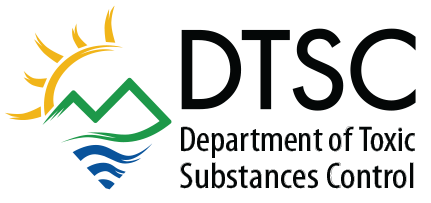Food Packaging Containing Perfluoroalkyl or Polyfluoroalkyl Substances
DTSC proposed to list one or more plant fiber-based food packaging containing perfluoroalkyl or polyfluoroalkyl substances (PFASs) as Priority Products under the Safer Consumer Products (SCP) regulations. On October 5, 2021, Governor Newsom signed Assembly Bill (AB) 1200 into law. This bill bans all plant fiber-based food packaging containing PFASs that are either intentionally added or present at levels exceeding 100 parts per million total organic fluorine, beginning January 1, 2023. Therefore, there is no longer a need for this product-chemical combination to be listed as a Priority Product.
The concerns with plant fiber-based food packaging containing PFASs
PFASs are a class of chemicals characterized by highly stable carbon-fluorine bonds and used in many applications, including plant fiber-based food packaging. In May 2021, DTSC published a final technical document on plant fiber-based food packaging containing PFASs, after considering input from the public and the external scientific peer review (ESPR) process.
Based on the criteria in the Safer Consumer Products regulations, DTSC determined that plant fiber-based food packaging products containing PFASs have the potential to cause or contribute to significant and widespread adverse impacts to sensitive subpopulations, including fetuses, infants, young children, and workers; to environmentally sensitive habitats; and to threatened and endangered species. Given the known hazard traits, replacing currently used PFASs in food packaging with other members of the PFAS class could constitute a regrettable substitution.
Plant fiber-based food packaging products commonly found in restaurants, grocery stores, and homes are often treated with PFASs for grease, oil, or water resistance. These products can expose humans and biota to PFASs during their manufacturing, use, and end-of-life. PFASs can migrate from food packaging into the packaged food, with migration rates dependent on the temperature, acidity, storage time, and fat content of the food. Used PFAS-treated food packaging products are sometimes composted, releasing PFASs into the compost. When used food packaging is sent to a landfill, the PFASs can migrate into landfill leachate, contaminating surface waters and the surrounding environment. When applied to soil as fertilizers, biosolids from wastewater treatment plants that treat PFAS-contaminated landfill leachate can contaminate drinking water sources and food crops. Recycled products made from PFAS-treated paper, paperboard, and molded fiber food packaging can also be a source of PFAS exposure. Harmful PFAS combustion products may also be released when these products are incinerated.
Exposure to PFASs can lead to adverse health outcomes in humans. If humans are exposed to PFASs through diet, drinking water or inhalation, some of these chemicals remain in the body for a long time. As people continue to be exposed to PFASs the levels in their bodies may increase to the point where they suffer from adverse health effects. Studies indicate that some PFASs can cause reproductive and developmental, liver and kidney, and immunological effects, as well as tumors in laboratory animals. The most consistent findings from human epidemiology studies are a small increase in serum cholesterol levels among exposed populations, with more limited findings related to infant birth weights, effects on the immune system, cancer, and thyroid hormone disruption. Some PFASs have also been linked to phytotoxicity, aquatic toxicity, and terrestrial ecotoxicity.
Public Workshop and Comment Period
DTSC hosted a virtual workshop to receive public input on August 31, 2020, following an introductory workshop on January 14th, 2020. To view comments submitted regarding this proposal, please visit the CalSAFER site.
Below are downloads related to this workshop:
Technical Document
DTSC has finalized the draft profile published July 2020, after considering input from the public and the external scientific peer review (ESPR) process:
SCP Key Info
- About Safer Consumer Products
- Program Overview
- Candidate Chemicals
- Priority Product Work Plan
- Priority Products
- Alternatives Analysis
- Regulatory Response
- Compliance & Enforcement
- Research Studies
- Early-stage SCP Projects
- Information Call-in
- Healthy Nail Salon Recognition Program
- Limiting Copper in Brake Pads
Engage and Learn More
- Frequently Asked Questions
- CalSAFER
- SCP Regulations
- Training Materials
- Safer Consumer Products Library
- Safer Consumer Central
- SCP’s Environmental Justice Initiative
- Workshops & Events
- Green Ribbon Science Panel
- PEARL
- Failure to Comply List
- Publications & Media
- Petitions
- About Us
- Career Opportunities
